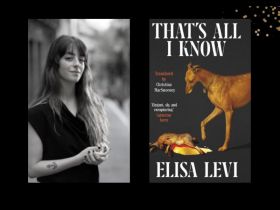Image: Tim Munro’s dramatic bio pic www.timothymunro.com/#about
Performers, like most artists, have great life stories that support their professional accolades and accomplishments. But too often, their bios are an exhaustive fact list of past teachers, workshops and concert performances that are irrelevant to most audiences. Killer bios require two key points, firstly facts and secondly your story. Facts establish your credibility then your story makes a personal connection.
Your bio is not merely a record of the past. It should function as a call to action, inspiring the reader to do something with the knowledge (ideally hire or at least contact you). Here is the opening paragraph of Flautist Tim Munro’s web bio.
Tim Munro is a Chicago-based, double Grammy winning musician. His diverse work as a flutist, speaker, writer and teacher is united by a single goal: to draw audiences into an engrossing and whimsical musical world.’
Would you keep reading, check out his website or go see him perform? Do you get a sense of what a concert experience or lesson might be like? In this two sentence paragraph, Tim has conveyed a clear sense of his range of his musical interests (‘diverse’), his credentials (‘double Grammy winner’) and his personal and professional values (‘engrossing and whimsical’).
Tim’s bio then continues on in a beautifully structured format to tell the reader what he does, who he does it with, how he does it, what’s next and what else is interesting about him and his life. You can read the full bio on his website www.timothymunro.com/#about
This great piece of communication does not include a laundry list of facts, hype and hyperbole but rather paints a portrait of a distinctive and impressive individual. He has used imaginative and descriptive language paired with short, relevant quotes.
‘In October 2014, Tim released his first solo album, “one two three,” a funny, terrifying, and unpredictable journey that casts Munro as flutist, singer, amateur mathematician, and supervillain.’
‘According to the Chicago Tribune, “the fierce virtuosity of Tim Munro was worth the price of admission all by itself.” Tim’s solo performances are “bravura”, “charismatic” (The New York Times), engrossing” (Chicago Tribune) and “brilliantly clear and beautifully balanced” (Sydney Morning Herald).’
Writing or revising a bio is challenging and everyone struggles to strike the right tone and balance of detail. Here is a step by step guide to creating or improving yours.
1. Get Inspired
Make time to read the bios of artists you admire or musicians who are at a similar stage in their careers. Do you get a sense of what the person’s musical interests and passions are? Is the lead sentence compelling? Does the order of information make sense? What style of language or tone is conveyed? Remember that this exercise is about analysing a wide range of examples, not about comparing accomplishments.
2. Know Your Reader
Performers need multiple versions of their bio, each tailored for an individual audience so determine the audience for this piece of communication. Is it for a concert audience, potential collaborators, prospective students or grant application? Knowing your audience will help you clarify the tone, content and length of your bio. As a starting point you need a short and long version for concert programs.
3. Meta List
Write a meta list of items you might include in your bio, this will include performances, ensembles, repertoire, festivals, teachers, projects, reviews, awards, future projects and interesting personal information. If you haven’t been keeping track of this information, this will give you a reason to start. Don’t worry about structure or writing sentences, just make your list as complete as possible and save it electronically for future revision.
4. Lead On
Take a stab at choosing the lead, bios should grab the reader’s attention with the first sentence and entices them to keep reading. Jeff Nelsen wins with this unbeatable opener.
‘One of the many Canadian pig-farm-raised magician horn players in the world, Jeff Nelsen has thrilled audiences and mentored students for over twenty years.‘
In choosing your opening, think of your intended reader and lead with the information that will be most relevant to them. If the bio is for booking solo recitals, put your solo experience right up front or if the bio is for potential teaching work then lead with your relevant teaching experience. You may have one item that stands out as a good lead or you may end up with 2 or 3 items that make a great grouping.
5. Grouping
See what similar other items can be grouped together in paragraphs such as solo performances, chamber performances, upcoming projects, education listings and other interesting personal details. Remember Tim Munro’s structure is Who, What, How, Next and What Else.
6. Draft
Start your draft dealing with one paragraph topic area at a time and alternate referring to yourself by your full name, by last name, and by She/He. Any general statement or description should be backed up by specifics or quotes and link your sentences and paragraphs logically.
7. Ask A Friend
Once you have completed a draft, share it with your colleagues and ask for their constructive criticism. It is typical to work through a number of drafts. Remember, you will continually update your bio as your career progresses, so your bio, as well as your repertoire list and full resume are never finished documents.
8. Invest in an image
A great picture grabs the readers attention. Find one that captures the mood of your work and feels dramatic or impressive rather than making you look attractive and air-brushed. Remember your bio will often be read in conjunction with several others so the picture will be the first thing that makes you stand out.
Get busy now
1 Hour: Start your meta list.
30 Minutes: List of the different types of bios you might use and determine your audience.
5 Minutes: Read the online bio of a leading performer in your speciality, is it distinctive?
For further resources about improving career outcomes for musicians visit www.notablevalues.com





